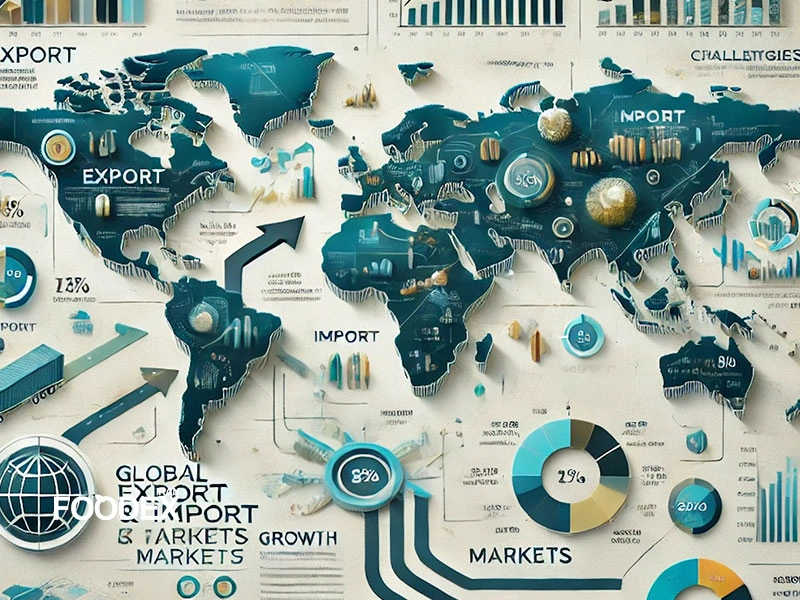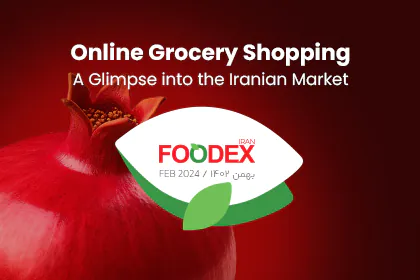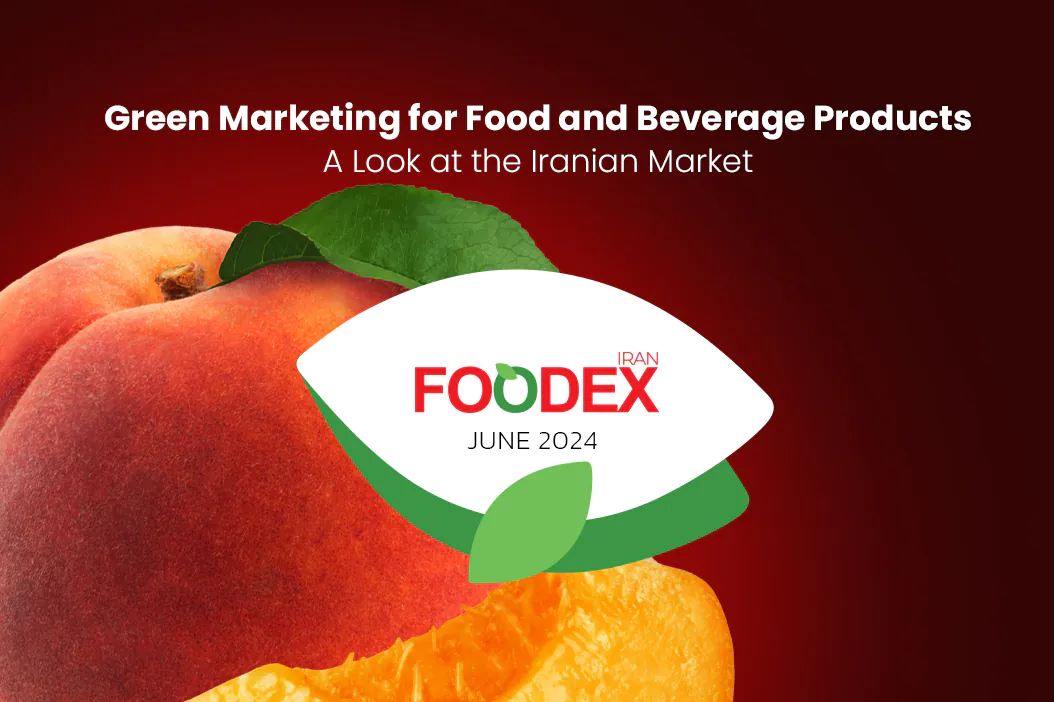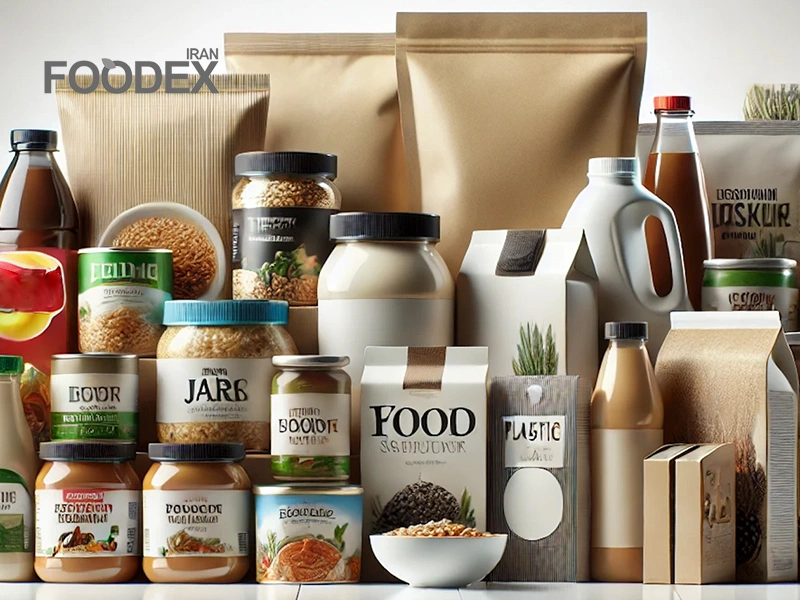The food industry is a dynamic sector. It is subject to constant change in the global economy. Political, economic, and technological shifts are common. Some key factors affect export and import trends in the industry. They are shifting trade policy, new food tech, and changing consumer tastes. These shifts create new opportunities and challenges for food traders in Iran and beyond.
This article from Foodex Iran magazine will review new trends in food export and import. We will reflect on the opportunities and challenges for industry players. We will highlight the key takeaways and main points of the issues. This will give us a complete view of the landscape and its problems.
Part 1: Emerging Opportunities in Global Markets
Global markets are changing fast. At the same time, consumer demand is shifting in most countries. This opens new export opportunities for food products in high-demand countries. This topic will explore recent export opportunities in Asia, Europe, and the Middle East.
Growth in Asian Markets
In the last ten years, rapid growth has made China, India, and Southeast Asia potential import markets. These countries have big populations. They also want high-quality, value-added food.
Why are these markets important?
China and India: A growing middle class wants better food. It drives demand for organic and premium products. Iranian producers can capitalize on this opportunity. They can export pistachios, dates, and saffron to these markets.
Southeast Asia: Countries like Indonesia, Vietnam, and Malaysia have large, growing economies and populations. They are now promising markets for food imports.
Opportunities for Iranian exporters
Expanding exports of organic products, particularly saffron, dried fruits, and dates.
Leveraging regional trade agreements to reduce tariffs and facilitate exports.
Expanding European Markets
Europe is one of the most competitive and high-demand markets in the world for foodstuffs. The EU’s high import standards boost the demand for organic, healthy food. For Iranian producers with export growth ideas, Europe is very promising.
What makes Europe attractive?
Demand for organic products is rising. European consumers want food that is healthy and eco-friendly. This market has a high demand for Iranian organic products, especially saffron and pistachios.
Supportive regulations: Trade agreements between European countries and Iran can support export processes. Iranian brands that meet EU quality standards will have a better chance of gaining market share.
Opportunities for Iranian producers
Entering European markets by partnering with local distribution companies.
Investing in packaging and production that meet Europe’s environmental standards.
Middle Eastern and GCC Markets
GCC countries have been the main export markets for Iranian food. Rapid population growth and economic development are increasing food imports in these markets. This offers many opportunities for Iranian exporters.
Reasons these markets are important
Free trade: Some GCC countries have free trade agreements. They reduce tariffs and simplify imports.
High food demand: The UAE, Qatar, and Saudi Arabia rely on food imports due to their climates and low domestic production.
Opportunities for Iranian exporters
Exporting high-quality processed and packaged foods.
Develop Iranian food brands in GCC markets. Partner with local retailers and use digital channels.
Part 2: Challenges for Exporters and Importers
Entering global markets requires more than finding opportunities. Exporters must also know the challenges they may face. These include strict regulations in destination countries, political changes, and supply chain issues. Below, we explore these challenges in detail.
Strict International Standards and Regulations
Food exporters often struggle to meet the standards of target countries. The EU and the U.S. have strict food safety laws. Asian and GCC nations are raising their import standards.
Key standards
Food safety standards: Iranian exporters must know and apply HACCP and ISO 22000 in their food production and packaging. These are international standards.
Labeling regulations: Product labels must be clear, accurate, and legal in the destination countries. For instance, halal labeling is critical in GCC countries.
Impact of Political and Economic Changes
Currency fluctuations, economic sanctions, and trade policy changes may disrupt these activities. For instance, some economic sanctions on Iran limit its access to international markets. Some firms are now hesitant to trade with Iran.
Food Export: How to Get Prepared and Enter Global Markets
Economic challenges
Economic sanctions: International sanctions on Iran affect trade and currency transactions.
Currency rate fluctuations: Changes in exchange rates can impact import and export costs.
Part 3: The Impact of Changing Trade Laws and Agreements on Food Exports and Imports
Changes in trade laws and agreements can greatly affect these trends. We will examine new trade agreements and proposed changes to import laws. These changes can help exporters improve their trade decisions. They can also find easier ways to enter the international market.
New Trade Agreements and Their Impact on Exports
In the past years, most countries looked for new trade agreements to make the exchange of food easier. These agreements can lower tariffs and trade barriers. They can help exporters and importers access new markets.
Examples of recent agreements
Free trade agreements: The GCC countries are negotiating trade deals with some Asian and European nations. These agreements can reduce food tariffs and make it easier to export to these regions.
The EAEU and CIS countries, including Russia, Armenia, and Kazakhstan, have strengthened trade deals with Iran. This allows Iranian producers to access broader markets.
Challenges for exporters
New opportunities are emerging from these agreements. Producers must stay updated on changes to customs laws and import restrictions on common products. If we don’t meet these new standards, products may not reach target markets.
The Role of Changing Import Laws in Various Countries
New public safety and health concerns have led to new food import laws in many countries, especially in Europe and Asia.
Challenges related to new import laws
Stringent packaging requirements: Many countries have strict regulations on food packaging. The EU urges less plastic use and more eco-friendly packaging. Iranian exporters need to follow these regulations to access these markets.
Hygiene standards: Japan and South Korea have very high food manufacturing hygiene standards. So, checking raw materials and methods might complicate food exports to these countries.
New Horizons in Food Exports
The food export and import markets have huge opportunities and challenges. Iranian food producers mainly export to Asian, European, and GCC countries. Exporters and importers can exploit such opportunities. They must learn each market’s standards and regulations. They should also use new technologies to improve their production and packaging efficiencies.
Sources
FAO (Food and Agriculture Organization)
WTO (World Trade Organization)
Iran Chamber of Commerce
Reports from the Eurasian Economic Union (EAEU)
Ministry of Industry, Mine and Trade (Iran)
Russian Chamber of Commerce
Ehsan Allahverdi
Executive Manager of Foodex Iran
Marketing Consultant for Leading Food & Beverage Brands
website | linkedin
























